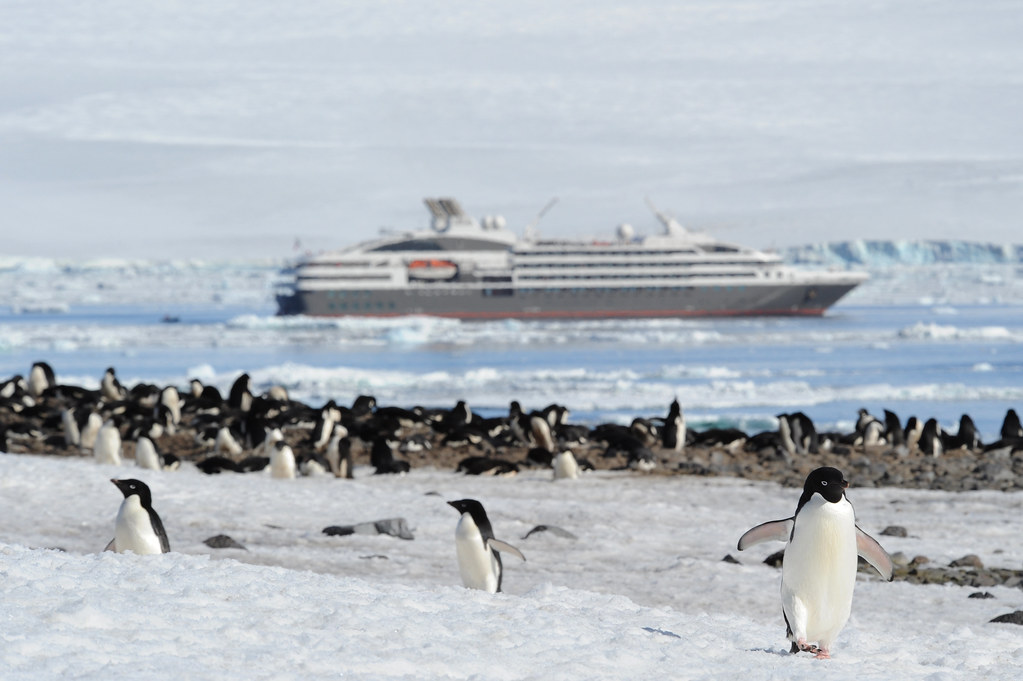#expeditioncruising
New Study Reveals Patterns in Antarctic Tourism
New Study Reveals Patterns in Antarctic Tourism
 |
| Ponant vessel in Antarctica, exemplifying the new era of luxury Antarctic cruising |
Newport, Rhode Island, USA: Results from a new study examining 20 years of commercial cruise activity in the Antarctic Peninsula region have important implications for Antarctic visitor management. The paper was published online this week in the journal Antarctic Science.
The analysis was conducted by Stony Brook University, Stony Brook, New York in conjunction with the International Association of Antarctica Tour Operators (IAATO), which has developed the most comprehensive dataset of any human activity in the Antarctic as part of its mission to promote the practice of safe and environmentally responsible private sector travel to the continent. The study revealed that, while the overall number of visitors landed in the region has increased over the last two decades, tourism activity is highly concentrated at a few specific locations along the Peninsula’s south-western coast. In the 2012/2013 season for example, over 75% of all landings occurred on an area of land equating to less than one-sixth of the area of London’s Heathrow Airport, about 200 hectares.
The analysis was conducted by Stony Brook University, Stony Brook, New York in conjunction with the International Association of Antarctica Tour Operators (IAATO), which has developed the most comprehensive dataset of any human activity in the Antarctic as part of its mission to promote the practice of safe and environmentally responsible private sector travel to the continent. The study revealed that, while the overall number of visitors landed in the region has increased over the last two decades, tourism activity is highly concentrated at a few specific locations along the Peninsula’s south-western coast. In the 2012/2013 season for example, over 75% of all landings occurred on an area of land equating to less than one-sixth of the area of London’s Heathrow Airport, about 200 hectares.
 |
| Port Lockroy on the Antarctic Peninsula is one of the most visited sites (R Eime) |
‘There are both opportunities and challenges to having concentrated landings of passengers at relatively few sites” says co-author Dr. Kim Crosbie, Executive Director of IAATO. “While this focus on a few sites, can create some challenges in terms of maintaining wilderness standards, it provides good opportunities for site-specific visitor management practices. As yet there has been little or no discernable impact at these sites, but understanding tourism patterns and trends is critical to reviewing management techniques for their continued protection.”
Antarctic tourism activity is also closely linked to economic activity in countries contributing the largest number of visitors. Nationalities have changed over time with China now representing 9% of all passengers visiting the Antarctic behind countries such as the USA, Australia and the UK. The growing market in Asia is expected to contribute to an increased demand to visit Antarctica in the coming years.
Lead author, Nicole Bender from Stony Brook University says, “Antarctica, though seemingly isolated, is strongly influenced by global socioeconomic forces. Understanding how these and also environmental drivers influence tourism patterns is hugely useful for informing management decisions regarding human activities in Antarctica.”
Antarctic tourism activity is also closely linked to economic activity in countries contributing the largest number of visitors. Nationalities have changed over time with China now representing 9% of all passengers visiting the Antarctic behind countries such as the USA, Australia and the UK. The growing market in Asia is expected to contribute to an increased demand to visit Antarctica in the coming years.
Lead author, Nicole Bender from Stony Brook University says, “Antarctica, though seemingly isolated, is strongly influenced by global socioeconomic forces. Understanding how these and also environmental drivers influence tourism patterns is hugely useful for informing management decisions regarding human activities in Antarctica.”

No comments:
Post a Comment